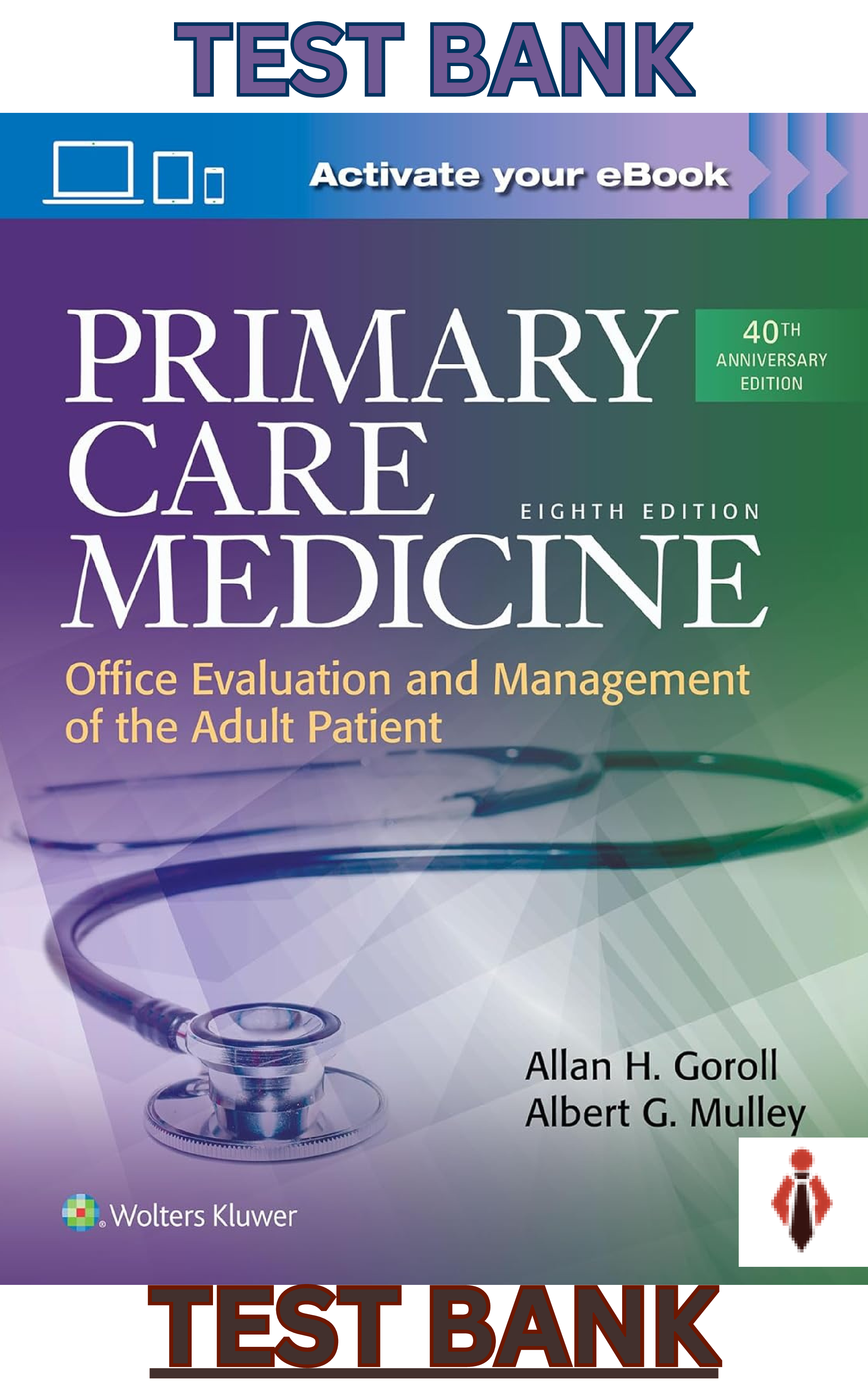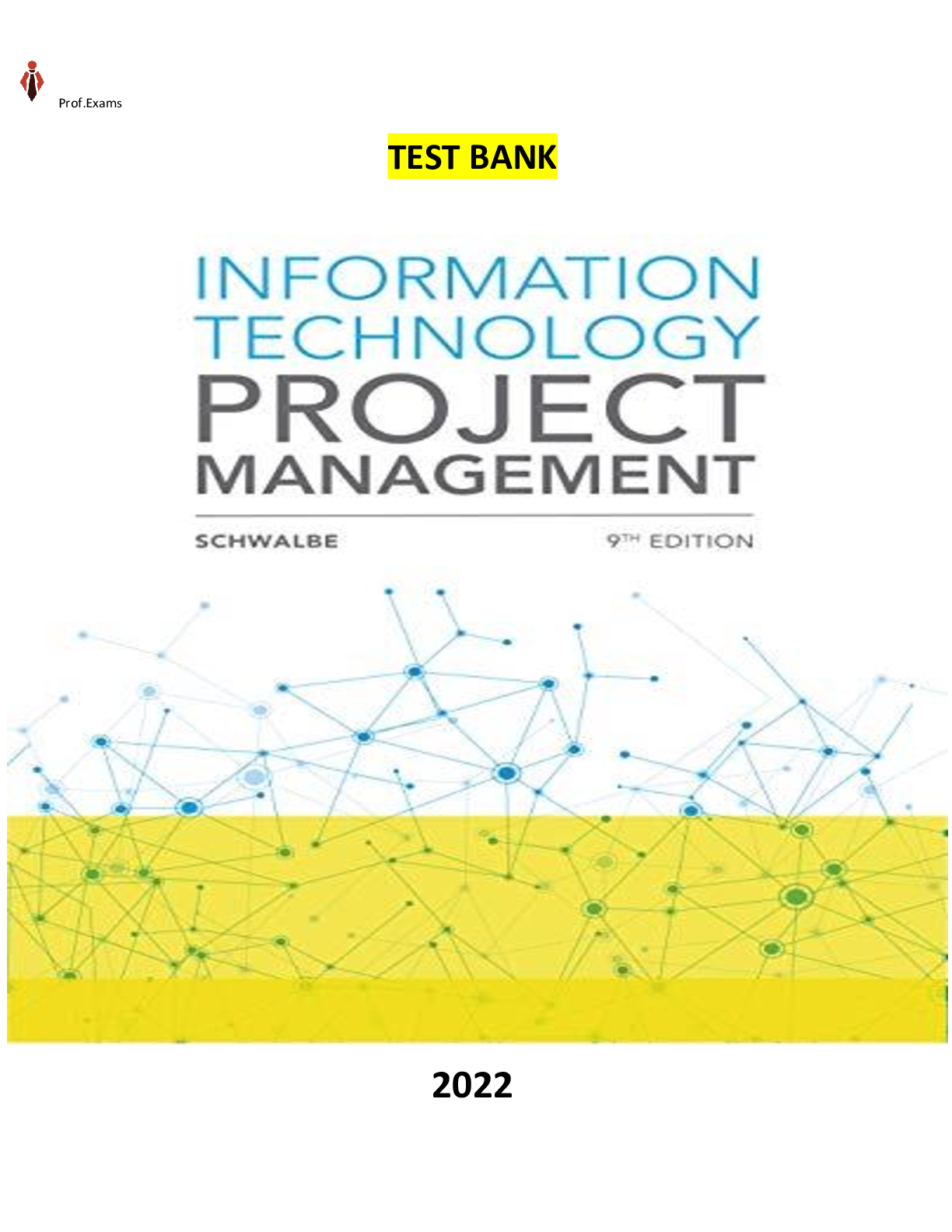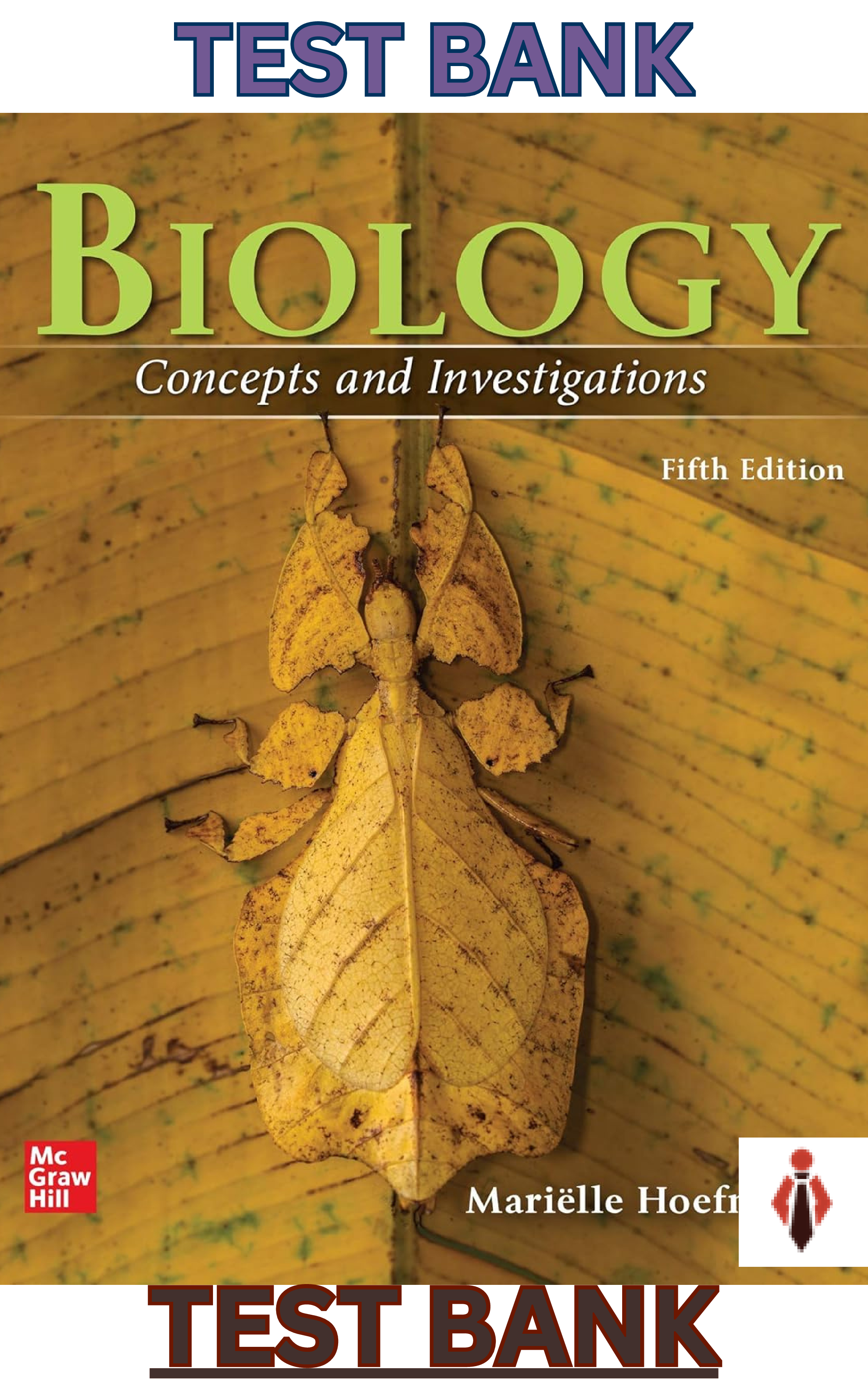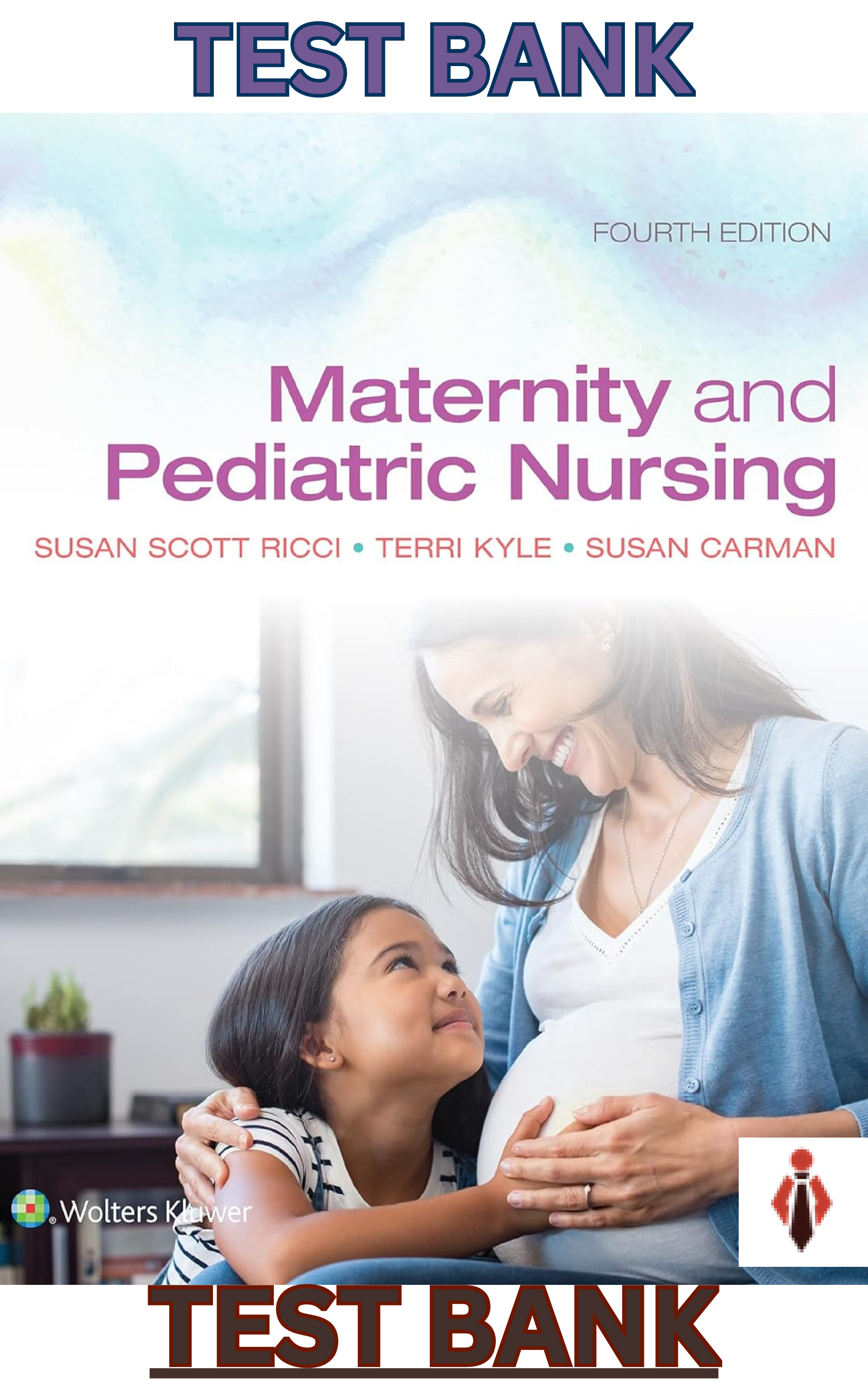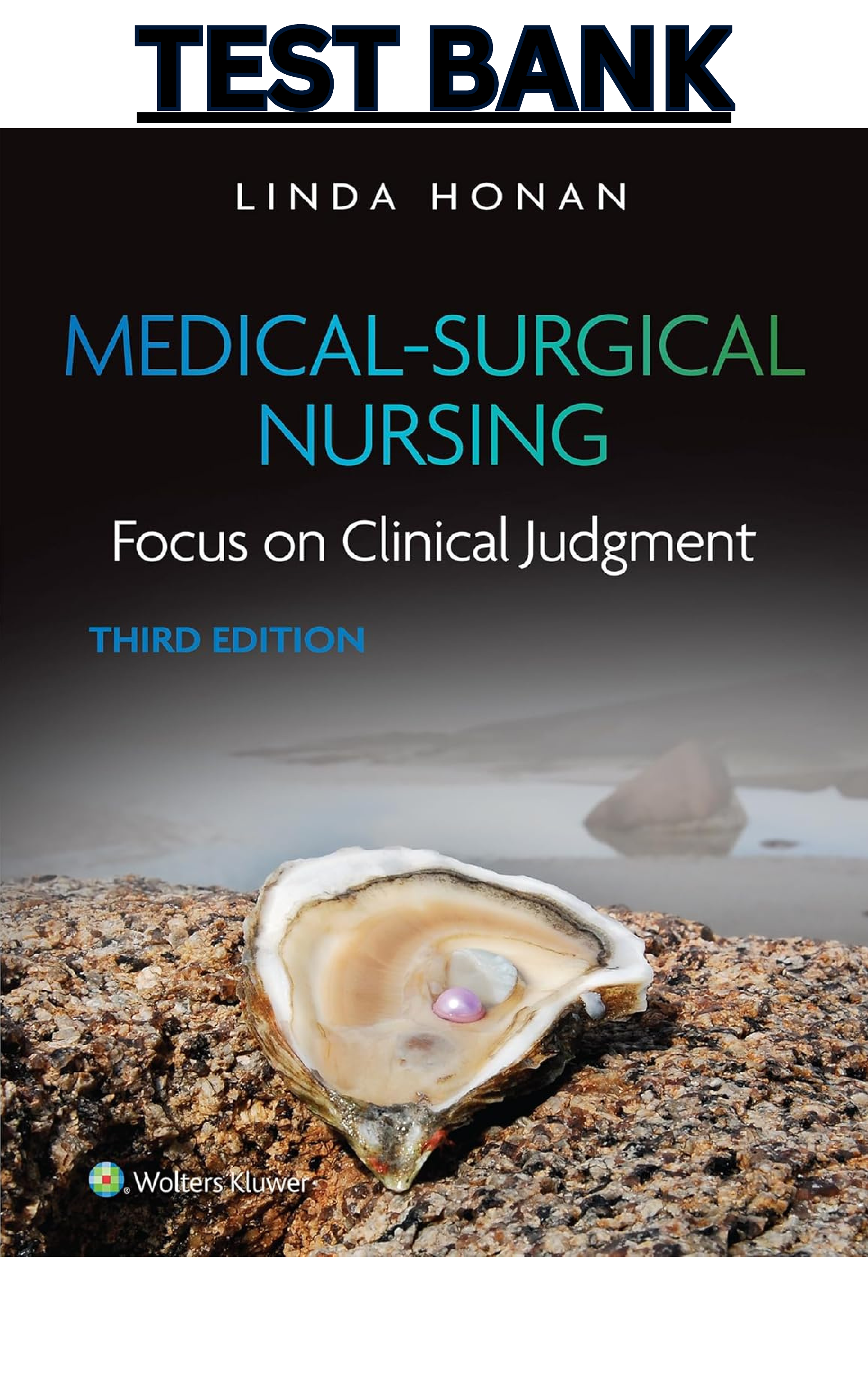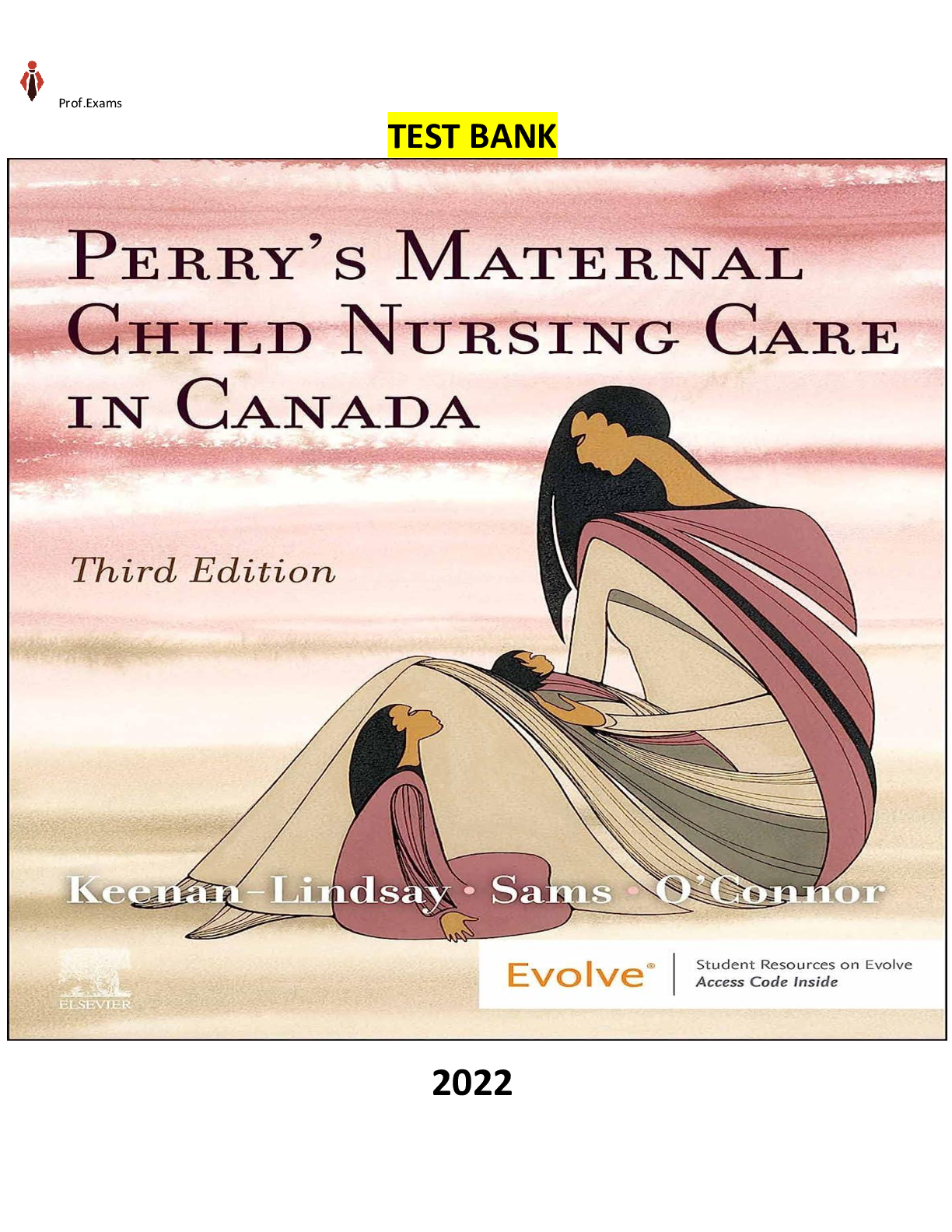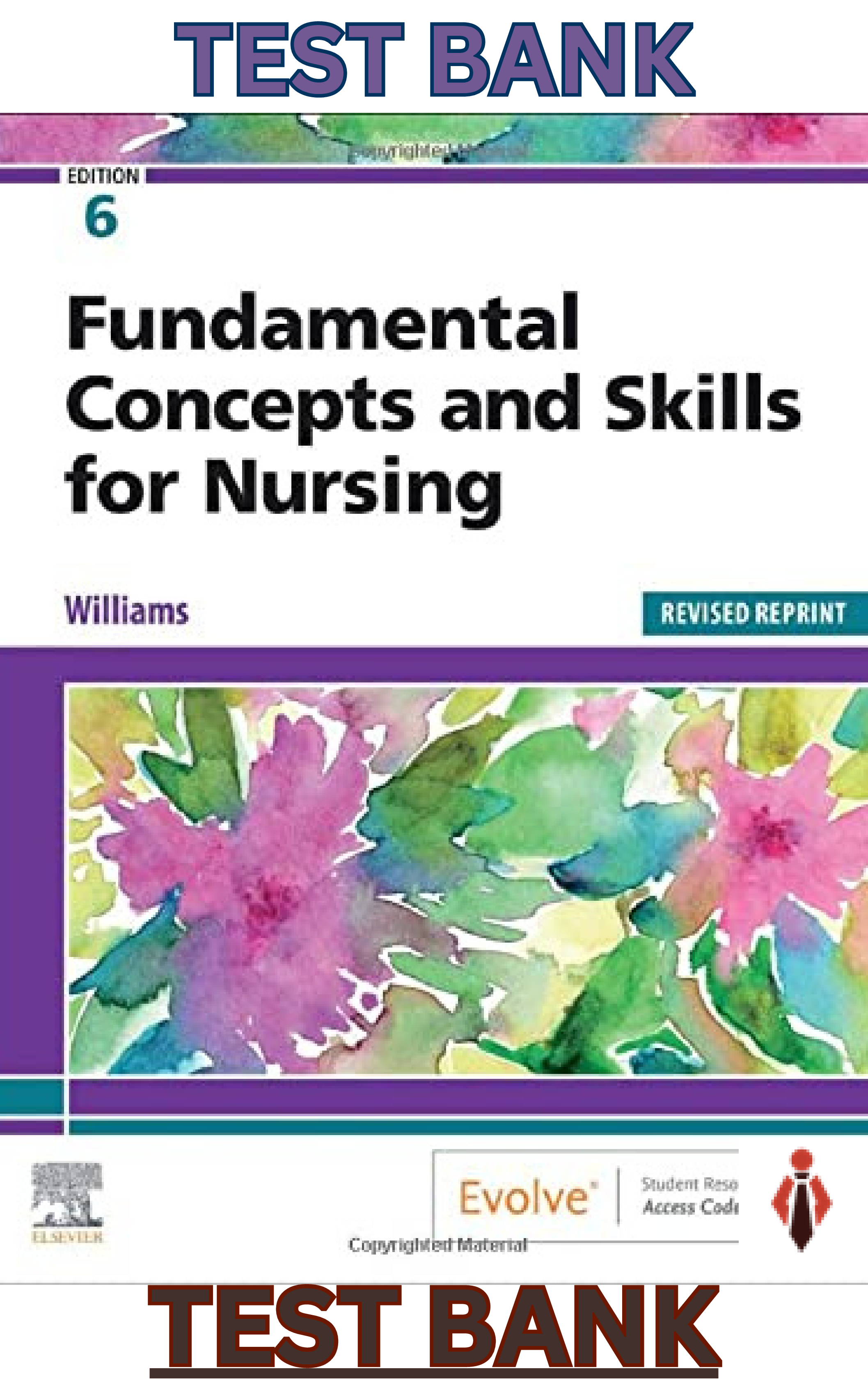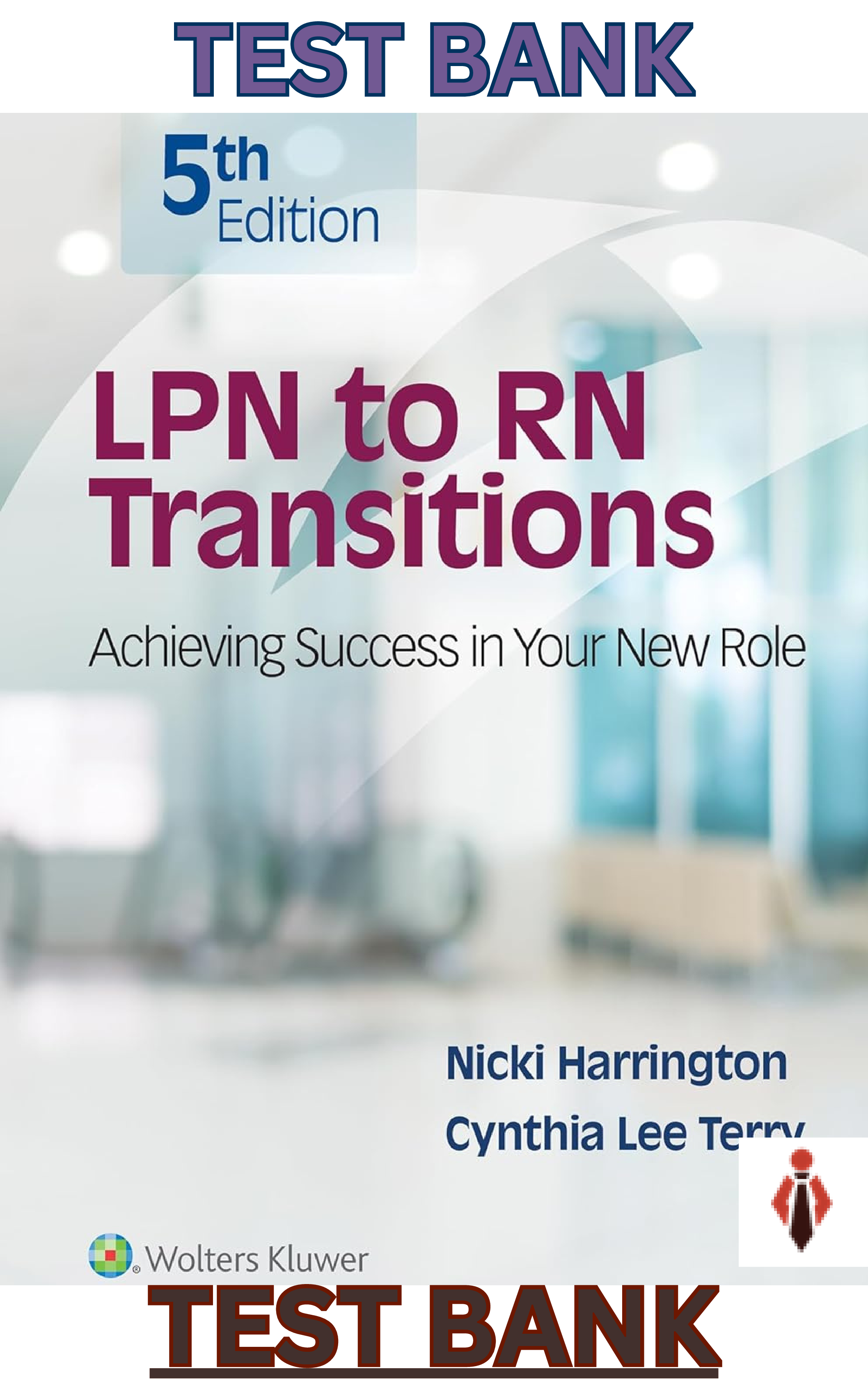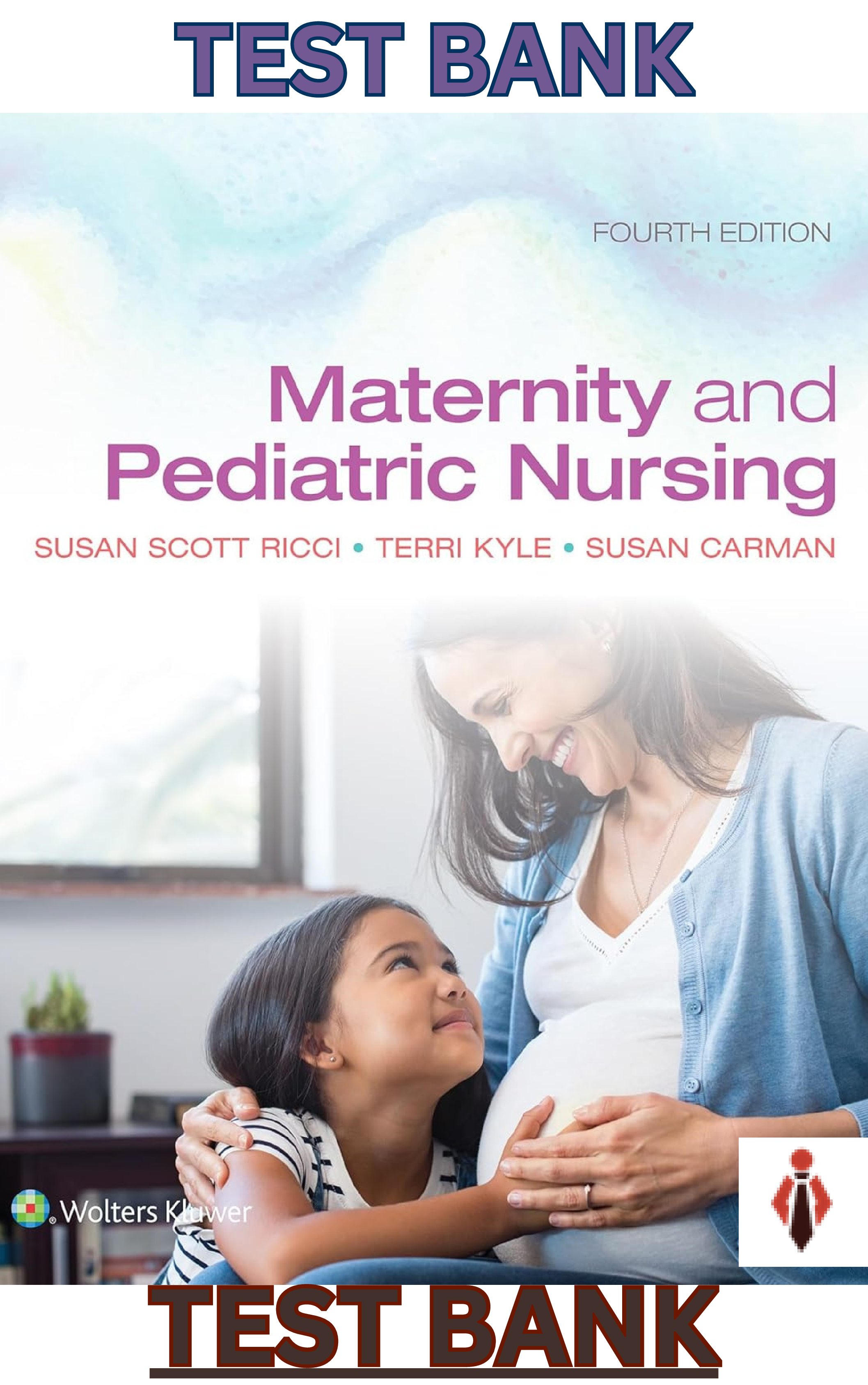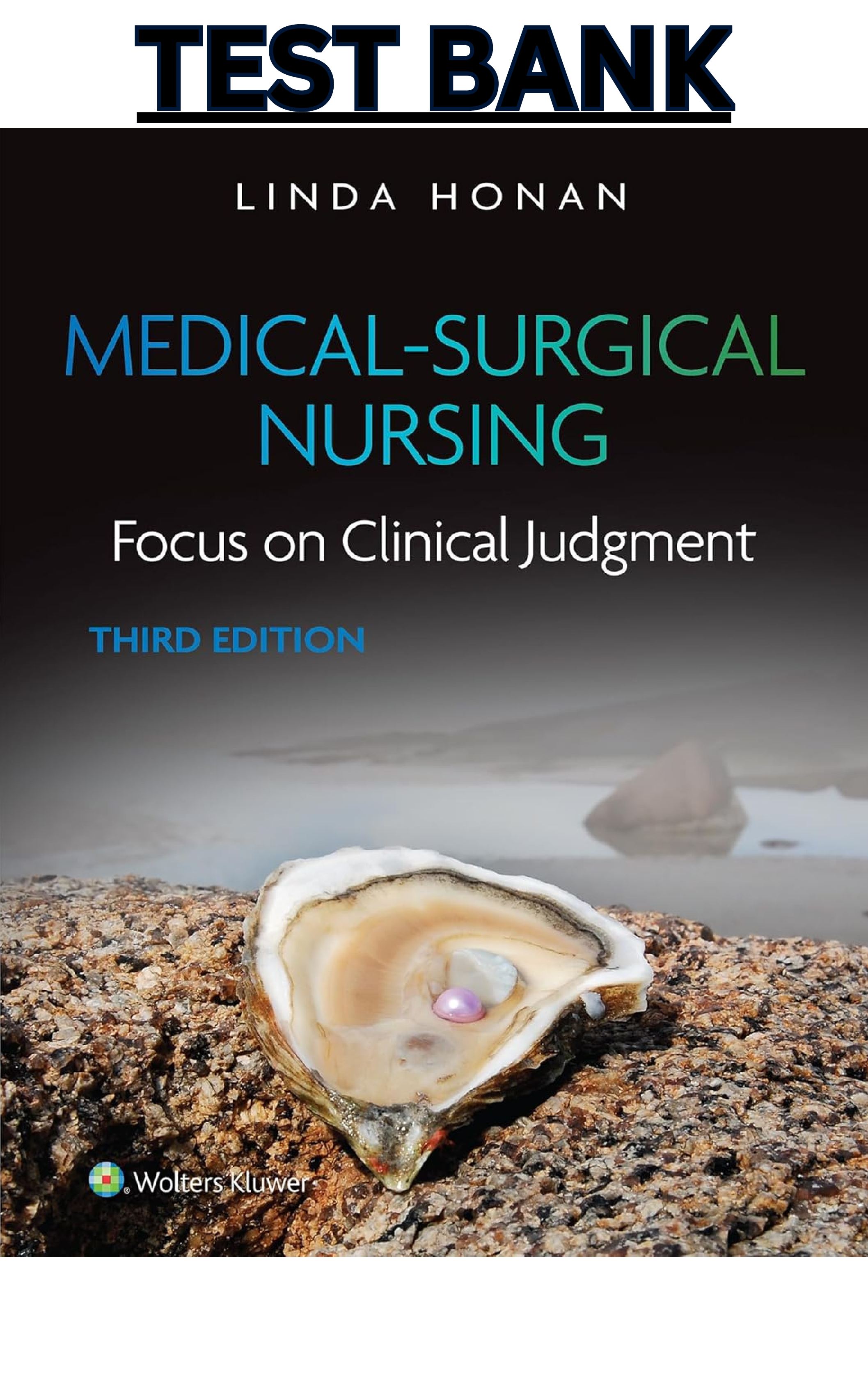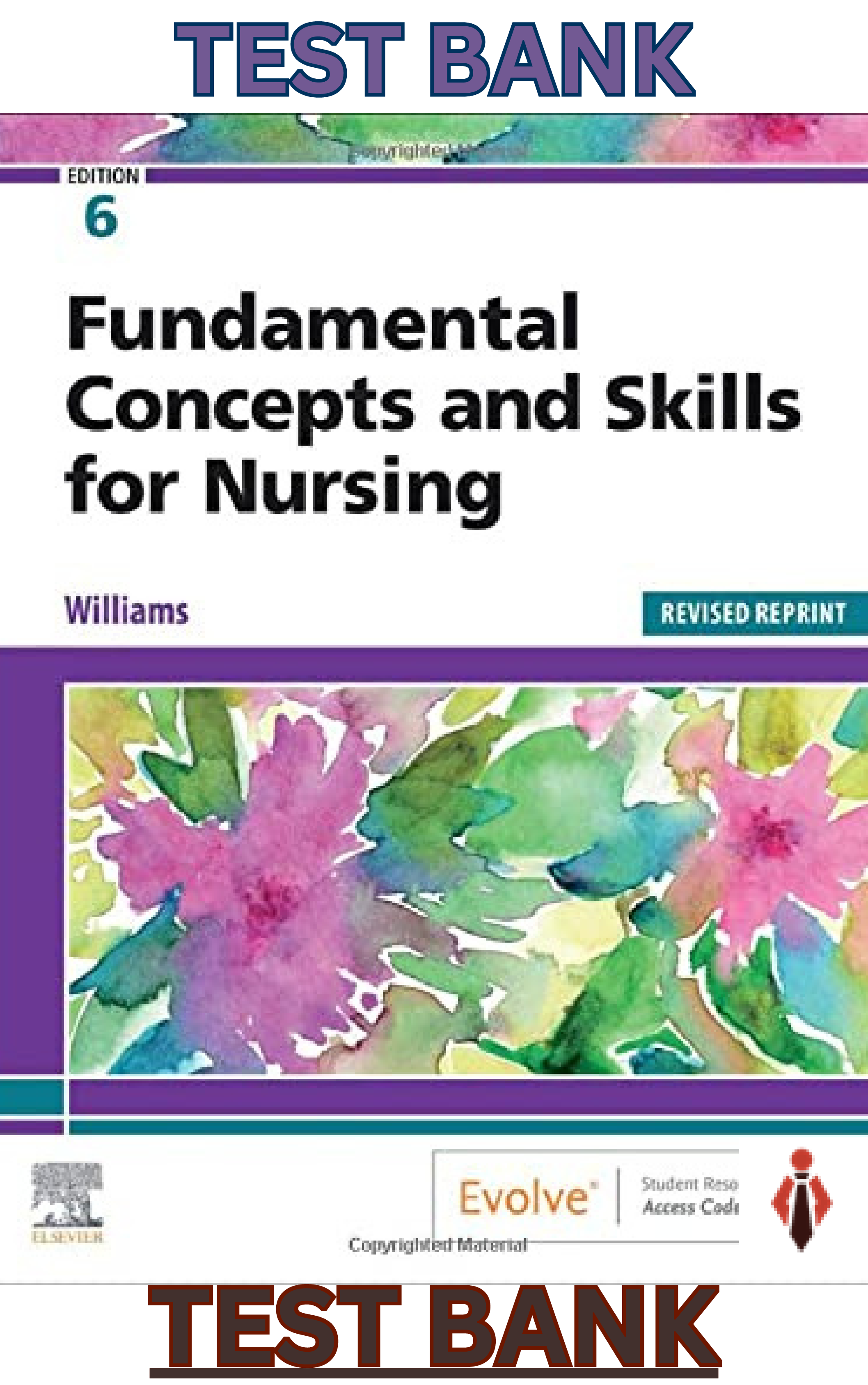*NURSING > TEST BANK > Test bank for Safe Maternity & Pediatric Nursing Care 2Ed. by Luanne Linnard-Palmer & Gloria Haile C (All)
Test bank for Safe Maternity & Pediatric Nursing Care 2Ed. by Luanne Linnard-Palmer & Gloria Haile Coats . Complete Elaborated and Latest Test Bank. ALL Chapters(1-38) Included - Questions & Answers Pass Safe Maternity & Pediatric Nursing Care 2Ed. by Luanne Linnard-Palmer & Gloria Haile Coats in First Attempt Guaranteed!Get 100% Latest Exam Questions, Accurate & Verified Answers to Pass the Actual Exam! Instant Download!
Document Content and Description Below
COMPLETE - Elaborated Test bank for Safe Maternity & Pediatric Nursing Care 2Ed. by Luanne Linnard-Palmer & Gloria Haile Coats . ALL Chapters(1-38) Included - Questions & Answers Pass Safe Maternit... y & Pediatric Nursing Care 2Ed. by Luanne Linnard-Palmer & Gloria Haile Coats in First Attempt Guaranteed!Get 100% Latest Exam Questions, Accurate & Verified Answers to Pass the Actual Exam! Instant Download! TABLE OF CONTENTS Unit One: Introduction to Maternity and Pediatric Nursing Prof.Exams 1. Introduction to Maternity and Pediatric Nursing 2. Culture 3. Women’s Health Promotion Across the Life Span Unit Two: Pregnancy and the Family 4. Human Reproduction and Fetal Development 5. Physical and Psychological Changes of Pregnancy 6. Nursing Care During Pregnancy 7. Promoting a Healthy Pregnancy 8. Nursing Care of the Woman With Complications During Pregnancy Unit Three: Birth and the Family 9. Nursing Care During Labor and Childbirth 10. Nursing Care of the Woman With Complications During Labor and Birth 11. Birth-Related Procedures Unit Four: Postpartum Period and the Family 12. Postpartum Nursing Care 13. Postpartum Complications Unit Five: The Newborn 14. Physiological and Behavioral Adaptations of the Newborn 15. Nursing Care of the Newborn 16. Newborn Nutrition 17. Nursing Care of the Newborn at Risk Unit Six: Growth and Development 18. Health Promotion of the Infant: Birth to One Year Prof.Exams 19. Health Promotion of the Toddler 20. Health Promotion of the Preschooler 21. Health Promotion of the School-Aged Child 22. Health Promotion of the Adolescent Unit Seven: Pediatric Concerns and Considerations 23. Nursing Care of the Hospitalized Child 24. Acutely Ill Children and Their Needs 25. Adapting to Chronic Illness and Supporting the Family Unit 26. The Abused Child Unit Eight: Deviations in Pediatric Health 27. Child With a Neurological Condition 28. Child With a Sensory Impairment 29. Child With a Mental Health Condition 30. Child With a Respiratory Condition 31. Child With a Cardiac Condition 32. Child With a Metabolic Condition 33. Child With a Musculoskeletal Condition 34. Child With a Gastrointestinal Condition 35. Child With a Genitourinary Condition 36. Child With a Skin Condition 37. Child With a Communicable Disease 38. Child With an Oncological or Hematological Condition Linnard-Palmer/Haile Coats 02-1 Safe Maternity and Pediatric Nursing Care, 2e Test Bank Copyright © 2021 F. A. Davis Company Chapter 2: Culture Multiple Choice Identify the choice that best completes the statement or answers the question. ____ 1. Which term should the nurse use to describe the display of culturally appropriate behaviors? 1) Cultural awareness 2) Cultural sensitivity 3) Diversity 4) Worldview ____ 2. Which term should the nurse use to describe developing cultural sensitivity? 1) Cultural awareness 2) Cultural competence 3) Diversity 4) Worldview ____ 3. Which nursing action is inappropriate when providing safe and effective nursing care? 1) Stereotyping a patient on the basis of ethnicity 2) Using a medical interpreter for a patient who does not speak English 3) Asking the patient how culture impacts his or her medical decisions 4) Monitoring drug effectiveness on the basis of race and gender ____ 4. Infant mortality rates in the Black population being double the rates in the White population is an example of which of the following? 1) Ethnicity 2) Endemic 3) Race 4) Health disparity ____ 5. Which question is used to assess economic factors that may influence a patient’s worldview and health status? 1) “Are you exposed to high levels of noise?” 2) “Do you have access to clean drinking water?” 3) “Do you have health insurance?” 4) “How many people live in your home?” ____ 6. The National Standards for Culturally and Linguistically Appropriate Services in Health Care (CLAS) include guidance on the use of medical interpreters. This guidance includes ensuring that consideration is given to which of the following patient preferences? 1) Age of the interpreter 2) Skin color of the interpreter 3) Number of languages spoken by the interpreter TEST BANK FOR SAFE MATERNITY AND PEDIATRIC NURSING CARE 2ND EDITION BY LINNARD PALMER. TESTBANKBLUE #1 NURSING TEST BANK WEBSITE Linnard-Palmer/Haile Coats 02-2 Safe Maternity and Pediatric Nursing Care, 2e Test Bank Copyright © 2021 F. A. Davis Company 4) Gender of the interpreter ____ 7. Which of the following is the rate to which people can obtain, process, and understand basic health information? 1) Worldview 2) Health literacy 3) Self-care 4) Language ____ 8. The nurse is providing care to a family with an unfamiliar cultural background. What is the best way for the nurse to familiarize herself with the culture of this family? 1) Google the particular culture. 2) Ask the interpreter to explain the culture to you. 3) Ask the family about their culture. 4) Post a question about the culture to Facebook. ____ 9. Which question should the nurse ask to assess economic factors that may impact a patient’s health status or function? 1) “What is the air quality?” 2) “Is healthcare affordable?” 3) “Was there exposure to disease or illness?” 4) “Do you feel safe where you live?” ____10. “When making health decisions, is assistance sought from others outside the family network?” This question could be used to assess which worldview contributing factor? 1) Migrational 2) Political 3) Environmental 4) Social ____ 11. Which is the priority nursing action when providing care to a patient who would like to use a home remedy as part of the prescribed treatment? 1) Telling the patient that the remedy cannot be used until the provider approves it 2) Asking the patient’s family to discourage the use of the remedy 3) Imploring the patient to share information about the remedy, such as the ingredients 4) Stating the hospital policy related to the use of home remedies ____ 12. The nurse is providing care to a family with an unfamiliar cultural background. The family does not speak English, and the nurse is awaiting the arrival of a medical translator to assist with the admission assessment. Which action by the nurse is appropriate in this situation? 1) Removing the children from the room TEST BANK FOR SAFE MATERNITY AND PEDIATRIC NURSING CARE 2ND EDITION BY LINNARD PALMER. TESTBANKBLUE #1 NURSING TEST BANK WEBSITE Linnard-Palmer/Haile Coats 02-3 Safe Maternity and Pediatric Nursing Care, 2e Test Bank Copyright © 2021 F. A. Davis Company 2) Asking the charge nurse to reassign the family 3) Researching the family’s culture and common practices 4) Using nonverbal communication strategies to ask the family to be quiet ____ 13. Which nursing action enhances respectful and culturally sensitive communication? 1) Directing questions at the interpreter during the assessment process 2) Researching the cultures that the health-care organization is likely to serve 3) Telling the patient that the suggested home remedy will not be included in the plan of care 4) Asking the patient’s child to act as an interpreter during the discharge teaching process ____ 14. Nurses from diverse community groups being included in hospital committees addressing safety and education will assist hospitals in providing what kind of care? 1) Endemic 2) Culturally competent 3) Health literacy 4) Worldview ____ 15. The nurse is providing discharge teaching to a patient who does not speak English. Which action by the nurse is appropriate when providing reference materials to the patient? 1) Having the interpreter write the information in a notebook for the patient to take home 2) Asking the patient’s family to take notes during the teaching session 3) Accessing brochures and pamphlets that are written in the patient’s native language 4) Telling the patient to Google the information after discharge ____ 16. When screening a patient who speaks a different language, it is important to do which of the following? 1) Speak slowly. 2) Ask the family to leave the room when asking questions about safety and domestic violence. 3) Use a medical interpreter. 4) Speak louder than usual and use hand gestures. ____ 17. What term describes factors such as economic stability, access to food, education, social support systems, housing, neighborhood safety and environment, access to health insurance, and access to health care? 1) Health-care quality 2) Health disparity 3) Social determinant of health 4) Environmental factor ____ 18. The nurse can interact efficiently with medical interpreters by doing which of the following? 1) Having a pre-conversation to review the planned discussion 2) Using sign language when needed TEST BANK FOR SAFE MATERNITY AND PEDIATRIC NURSING CARE 2ND EDITION BY LINNARD PALMER. TESTBANKBLUE #1 NURSING TEST BANK WEBSITE Linnard-Palmer/Haile Coats 02-4 Safe Maternity and Pediatric Nursing Care, 2e Test Bank Copyright © 2021 F. A. Davis Company 3) Speaking directly to the interpreter 4) Using long sentences and medical terminology Multiple Response Identify one or more choices that best complete the statement or answer the question. ____ 19. Background knowledge of a community that is needed in order to deliver quality care includes which of the following? (Select all that apply.) 1) Availability of health promotion and preventive programs 2) Rates of chronic disease conditions 3) Political party affiliation 4) Languages spoken ____ 20. Which resources are appropriate to use when providing evidence-based patient education?(Select all that apply.) 1) PubMed 2) Wikipedia 3) WebMD 4) Cochrane reviews ____ 21. Which factors should the nurse consider when conducting a cultural assessment? (Select all that apply.) 1) Social 2) Economic 3) Physical 4) Environmental 5) Psychological ____ 22. Which of the following are examples of health disparities? (Select all that apply.) 1) Lesbian women are less likely to get cancer screenings. 2) Higher levels of education are linked to living longer. 3) Flossing teeth leads to fewer cavities. 4) Eating less meat reduces the risk of some cancers. ____ 23. Community resources that can be offered to maternal-child patients to improve continuity of care include which of the following? (Select all that apply.) 1) Maternal, Infant, and Early Childhood Home Visiting Program 2) Local book club 3) Affordable transportation 4) La Leche League 24. Which question(s) would the nurse ask when assessing environmental factors that may influence a patient’s worldview and health status? (Select all that apply.) 1) “Are you exposed to high levels of noise?” TEST BANK FOR SAFE MATERNITY AND PEDIATRIC NURSING CARE 2ND EDITION BY LINNARD PALMER. TESTBANKBLUE #1 NURSING TEST BANK WEBSITE Linnard-Palmer/Haile Coats 02-5 Safe Maternity and Pediatric Nursing Care, 2e Test Bank Copyright © 2021 F. A. Davis Company 2) “Do you have access to clean drinking water?” 3) “Do you have insurance?” 4) “How many people live in your home?” Chapter 2: Culture Answer Section MULTIPLE CHOICE 1. ANS: 2 Chapter number and title: 2: Culture Chapter learning objective: Define key terms in the chapter. Chapter page reference: 19 Heading: Conceptual Cornerstone-Diversity Integrated processes: Caring Client need: Psychosocial Integrity Cognitive level: Knowledge [Remembering] Concept: Diversity Difficulty: Easy Feedback 1 The term cultural awareness means to develop cultural sensitivity. 2 The term cultural sensitivity means to display culturally appropriate behaviors. 3 The term diversity is often perceived as differences. However, there are also similarities within diversity with respect to person, family, and well-being that are shared across cultures (groups of people with learned behaviors and a system of shared ideas). 4 Essential nursing abilities and characteristics in working with diverse patients include effective listening and communication skills, openness and appreciation of differences, and awareness of one’s own biases that may hinder the process of care and the provision of appropriate and sensitive services. Understanding another’s worldview can cultivate these needed nursing abilities and characteristics. PTS: 1 CON: Diversity 2. ANS: 1 Chapter number and title: 2: Culture Chapter learning objective: Define key terms in the chapter. Chapter page reference: 19 Heading: Conceptual Cornerstone-Diversity Integrated processes: Caring Client need: Psychosocial Integrity Cognitive level: Knowledge [Remembering] Concept: Diversity Difficulty: Easy TEST BANK FOR SAFE MATERNITY AND PEDIATRIC NURSING CARE 2ND EDITION BY LINNARD PALMER. TESTBANKBLUE #1 NURSING TEST BANK WEBSITE Linnard-Palmer/Haile Coats 02-6 Safe Maternity and Pediatric Nursing Care, 2e Test Bank Copyright © 2021 F. A. Davis Company Feedback 1 The term cultural awareness means development of cultural sensitivity. 2 The term cultural competence means functioning effectively within the cultural context of beliefs, behaviors, and needs of the person or community being served. 3 The term diversity is often perceived as differences. However, there are also similarities within diversity with respect to person, family, and well-being that are shared across cultures (groups of people with learned behaviors and a system of shared ideas). 4 The term worldview means one’s philosophy or conception of the world. PTS: 1 CON: Diversity 3. ANS: 1 Chapter number and title: 2: Culture Chapter learning objective: Discuss the importance of cultural awareness when providing safe and effective nursing care. Chapter page reference: 20-21 Heading: Diversity and Safety STAT! Integrated processes: Clinical Problem-Solving Process; Clinical Decision-Making Process Client need: Psychosocial Integrity Cognitive level: Application [Applying] Concept: Diversity Difficulty: Moderate Feedback 1 Stereotyping a patient on the basis of his or her ethnicity is an inappropriate action when providing safe and effective nursing care. 2 Using a medical interpreter for a patient who does not speak English is an appropriate action when providing safe and effective nursing care. Using a family member is an inappropriate nursing action. 3 Although it is important for the nurse to have general knowledge about the cultures and ethnicities served in the area in which he or she works, the best way to determine the influence of culture and ethnicity on a patient’s medical decisions is to ask this question during the health history portion of the assessment process. 4 Monitoring a patient for adverse effects to medications is an important nursing action when providing safe and effective nursing care. Considering the patient’s gender and his or her race is also essential because these can impact the effects the drug has on the body. PTS: 1 CON: Diversity and Safety 4. ANS: 4 Chapter number and title: 2: Culture Chapter learning objective: Examine health-care quality and disparities in care across population groups in the community. Chapter page reference: 21 TEST BANK FOR SAFE MATERNITY AND PEDIATRIC NURSING CARE 2ND EDITION BY LINNARD PALMER. TESTBANKBLUE #1 NURSING TEST BANK WEBSITE Linnard-Palmer/Haile Coats 02-7 Safe Maternity and Pediatric Nursing Care, 2e Test Bank Copyright © 2021 F. A. Davis Company Heading: Health-Care Quality and Disparities Integrated processes: Caring Client need: Psychosocial Integrity Cognitive level: Comprehension [Understanding] Concept: Diversity and Worldview Difficulty: Moderate Feedback 1 Ethnicity refers to membership in one or more ethnic groups including rituals and customs. 2 Endemic refers to something native to a certain area. 3 Race is a term that denotes genetic physical characteristics that are similar among members of a group as well as identification with one or more social groups. 4 Differences in rates of disease and disability among groups within a population are disparities in health. PTS: 1 CON: Diversity and Worldview 5. ANS: 3 Chapter number and title: 2: Culture Chapter learning objective: Examine the factors (social, environmental, economic, and political) that contribute to one’s worldview, health beliefs, and health behaviors. Chapter page reference: 21-23 Heading: Worldview Integrated processes: Clinical Problem-Solving Process; Clinical Decision-Making Process Client need: Coordinated Care Cognitive level: Application [Applying] Concept: Worldview Difficulty: Moderate Feedback 1 Asking about noise assesses environmental factors that may impact a patient’s health status or function. 2 Asking about access to water assesses environmental factors that may impact a patient’s health status or function. 3 Asking about insurance assesses economic factors that may impact a patient’s health status or function. 4 Asking about living conditions assesses environmental factors that may impact a patient’s health status or function. PTS: 1 CON: Worldview 6. ANS: 4 Chapter number and title: 2: Culture Chapter learning objective: Ensure the use of appropriate and acceptable resources and materials in promoting health teaching and illness prevention with patients and families. TEST BANK FOR SAFE MATERNITY AND PEDIATRIC NURSING CARE 2ND EDITION BY LINNARD PALMER. TESTBANKBLUE #1 NURSING TEST BANK WEBSITE Linnard-Palmer/Haile Coats 02-8 Safe Maternity and Pediatric Nursing Care, 2e Test Bank Copyright © 2021 F. A. Davis Company Chapter page reference: 23-24 Heading: Culturally Appropriate Assessment Integrated processes: Caring Client need: Psychosocial Integrity Cognitive level: Knowledge [Remembering] Concept: Diversity Difficulty: Moderate Feedback 1 Age of the interpreter is not the recommended patient preference to accommodate. 2 Skin color of the interpreter is not the recommended patient preference to accommodate. 3 Number of languages the interpreter is fluent in is not the recommended patient preference to accommodate. 4 The gender of the interpreter is the patient preference that should be accommodated if possible. PTS: 1 CON: Diversity 7. ANS: 2 Chapter number and title: 2: Culture Chapter learning objective: Define key terms in the chapter. Chapter page reference: 20-23 Heading: Diversity Integrated processes: Caring Client need: Psychosocial Integrity Cognitive level: Knowledge [Remembering] Concept: Promoting Health Difficulty: Easy Feedback 1 The term worldview means one’s philosophy or conception of the world. 2 The term health literacy means the rate at which people can obtain, process, and understand basic health information. 3 The term self-care means taking action to preserve one's own health. 4 Language is a method of communication. PTS: 1 CON: Promoting Health 8. ANS: 3 Chapter number and title: 2: Culture Chapter learning objective: Ensure the use of appropriate and acceptable resources and materials in promoting health teaching and illness prevention with patients and families. Chapter page reference: 23-24 Heading: Culturally Appropriate Assessment Integrated processes: Clinical Problem-Solving Process; Clinical Decision-Making Process Client need: Coordinated Care Cognitive level: Application [Applying] TEST BANK FOR SAFE MATERNITY AND PEDIATRIC NURSING CARE 2ND EDITION BY LINNARD PALMER. TESTBANKBLUE #1 NURSING TEST BANK WEBSITE Linnard-Palmer/Haile Coats 02-9 Safe Maternity and Pediatric Nursing Care, 2e Test Bank Copyright © 2021 F. A. Davis Company Concept: Diversity and Development Difficulty: Moderate Feedback 1 Google is not an evidence-based tool that the nurse should use to learn about a patient’s culture. 2 Although the interpreter may have some insight into the culture of the family, an interpreter is not the best or most reliable source of information on the culture of this family unless being used to communicate directly with the family. 3 Tactful and sensitive communications with the family can improve your understanding of the family’s process of decision-making as well as their beliefs and values. Reading about a culture will give you information but does not replace communication. 4 Facebook is a social media site and should not be used to learn about a patient’s culture. PTS: 1 CON: Diversity and Development 9. ANS: 2 Chapter number and title: 2: Culture Chapter learning objective: Examine the factors (social, environmental, economic, and political) that contribute to one’s worldview, health beliefs, and health behaviors. Chapter page reference: 21-23 Heading: Worldview Integrated processes: Clinical Problem-Solving Process; Clinical Decision-Making Process Client need: Health Promotion and Maintenance Cognitive level: Application [Applying] Concept: Promoting Health and Worldview Difficulty: Moderate Feedback 1 Asking about air quality assesses environmental factors that may impact a patient’s health status or function. 2 Asking if healthcare is available and affordable assesses economic factors that may impact a patient’s health status or function. 3 Asking about exposure to disease or illness assesses environmental factors that may impact a patient’s health status or function. 4 Asking if a patient feels safe at home assesses environmental factors that may impact a patient’s health status or function. PTS: 1 CON: Promoting Health and Worldview 10. ANS: 4 Chapter number and title: 2: Culture Chapter learning objective: Examine the factors (social, environmental, economic, and political) that contribute to one’s worldview, health beliefs, and health behaviors. Chapter page reference: 21-23 Heading: Worldview Integrated processes: Clinical Problem-Solving Process; Clinical Decision-Making Process TEST BANK FOR SAFE MATERNITY AND PEDIATRIC NURSING CARE 2ND EDITION BY LINNARD PALMER. TESTBANKBLUE #1 NURSING TEST BANK WEBSITE Linnard-Palmer/Haile Coats 02-10 Safe Maternity and Pediatric Nursing Care, 2e Test Bank Copyright © 2021 F. A. Davis Company Client need: Health Promotion and Maintenance Cognitive level: Application [Applying] Concept: Promoting Health and Worldview Difficulty: Moderate Feedback 1 Asking about family health-care decision-making does not assess migrational factors that may impact a patient’s health status or function. 2 Asking about family health-care decision-making does not assess political factors that may impact a patient’s health status or function. 3 Asking about family health-care decision-making does not assess environmental factors that may impact a patient’s health status or function. 4 Correct. Asking about family health-care decision-making assesses social factors that may impact a patient’s health status or function. PTS: 1 CON: Promoting Health/Worldview/Diversity 11. ANS: 3 Chapter number and title: 2: Culture Chapter learning objective: Demonstrate sensitivity to cultural beliefs, values, and practices when providing care by seeking and giving feedback, listening, and observing. Chapter page reference: 19 Heading: Encountering Diversity Integrated processes: Clinical Problem-Solving Process; Clinical Decision-Making Process Client need: Psychosocial Integrity Cognitive level: Analysis [Analyzing] Concept: Diversity/Promoting Health/Safety Difficulty: Difficult Feedback 1 Although it may be necessary to ask the patient to stop using the remedy, this cannot be determined until an assessment of the remedy has been completed. 2 The nurse should not ask the family to discourage the use of the remedy. A thorough assessment is needed before any action regarding the remedy is implemented. 3 The nurse should ask the patient to provide information about the remedy, such as the ingredients and how it is used. This allows the nurse to provide important information to other members of the health-care team to determine if its use is safe. 4 Although it is appropriate for the nurse to share policies related to the use of home remedies, this is not the priority action. The priority action is gathering information about the remedy for sharing with other members of the team when planning care. PTS: 1 CON: Promoting Health/ Diversity/Safety 12. ANS: 3 Chapter number and title: 2: Culture Chapter learning objective: Demonstrate sensitivity to cultural beliefs, values, and practices when,. [Show More]
Last updated: 2 weeks ago
Preview 1 out of 512 pages
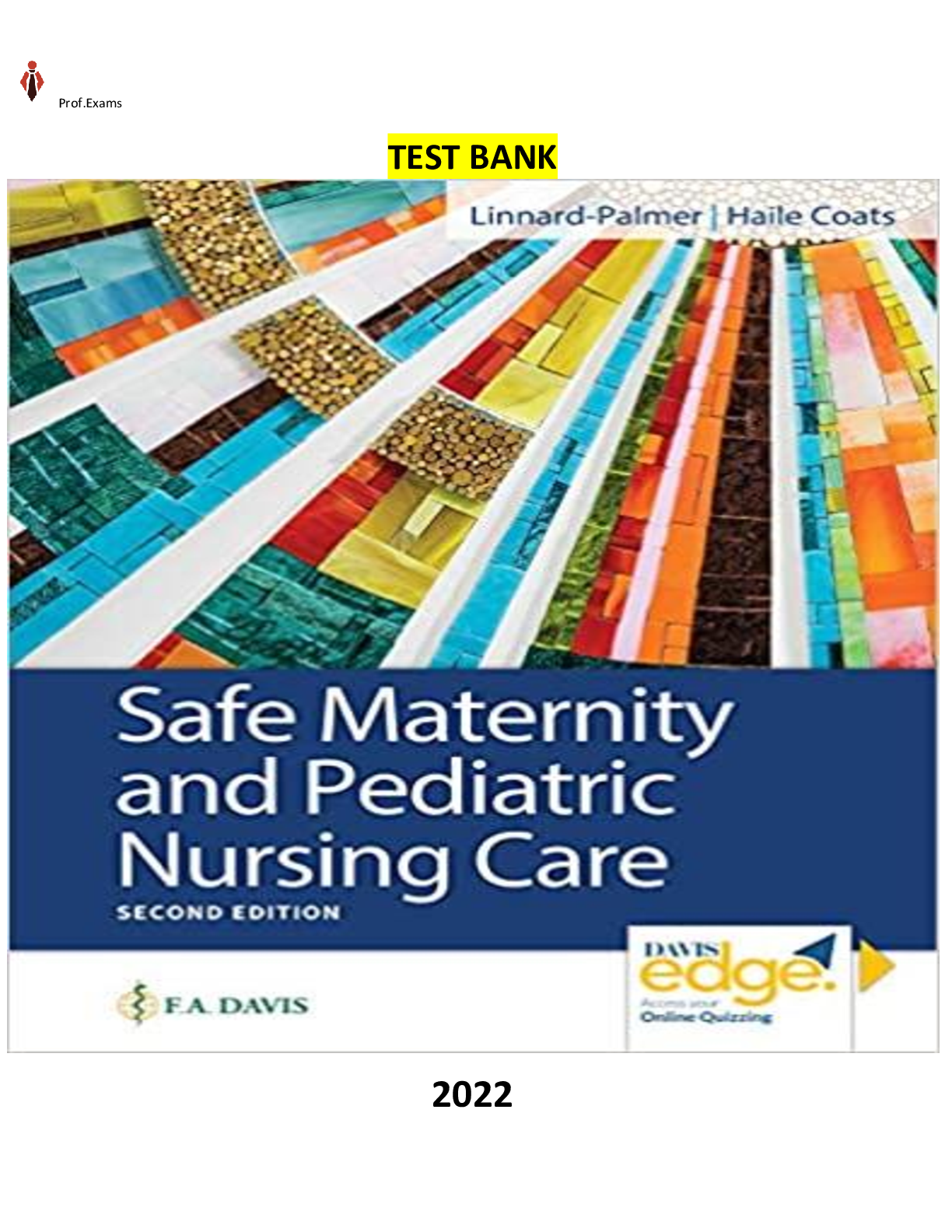
Reviews( 0 )
Document information
Connected school, study & course
About the document
Uploaded On
May 11, 2023
Number of pages
512
Written in
Additional information
This document has been written for:
Uploaded
May 11, 2023
Downloads
0
Views
184


